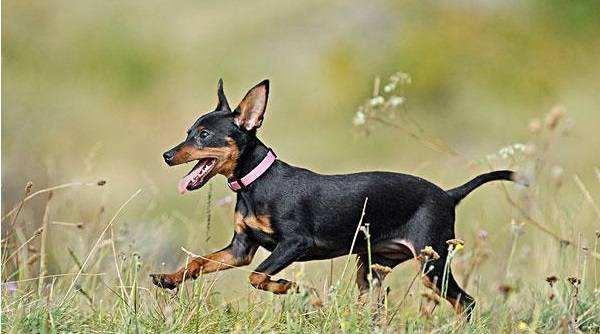Miniature Pinscher
IUCN
LCBasic Information
Scientific classification
- name:Miniature Pinscher
- Scientific Name:Deerhounds
- Outline:Carnivora
- Family:Canidae
Vital signs
- length:25cm
- Weight:3kg
- lifetime:12-13 year
Feature
The Miniature Pinscher is alert, intelligent and loyal. Despite its small size, it is very brave and makes an excellent family dog. It is also an expert mouse catcher and has a lively attitude.
Distribution and Habitat
Originated from Germany
Appearance
The ears are erect, set high, and may be cropped. The eyes are full, bright, dark or solid black, slightly oval, with dark eye rims, except in chocolate dogs (which match the body color). The nose is black, except in chocolate dogs (which match the body color). The muzzle is strong but not delicate, forming a whole with the head, and the teeth meet in a scissor-like bite. The neck is slightly arched and gracefully curved, muscular and free of dewlap. The chest is well developed and moderately deep. The topline is level or slightly sloping back. The front legs and back move parallel, neither curving in nor out. The tail is erect, high on the heel, and cut in place.
The coat is short, smooth, and shiny, lying close to the body. A black-brown coat is typical of the Miniature Pinscher. The lips, cheeks, chest, jaw, throat, front feet, hind feet, heels, and around the underside of the tail are all tan. The better breed is the one without white hair on the chest.
Details
The Miniature Pinscher is a native German breed, also known as the Deer Dog because of its deer-like appearance. It has been featured in many modern famous paintings and is now popular in Europe and the United States. It has existed for several centuries and is not the miniature Doberman as everyone thinks. Its ancestor is the German Doberman.

The German Doberman Pinscher has a mixture of Italian Greyhound and Dachshund genes. Centuries before the Miniature Pinscher, the Miniature Pinscher (German for Terrier) had already appeared in Germany and Scandinavia. The breed was officially recognized in 1870 and became widespread in Europe. In 1895, the German Doberman Pinscher Club was established and the Miniature Pinscher was recognized. In 1920, the Miniature Pinscher was introduced to the United States and was loved by the locals. In 1929, the American Miniature Pinscher Club was established, and the breed was more prosperous in the United States than in the United Kingdom.
The Miniature Pinscher is lively, cheerful, and strong. It walks with its head held high, which is very popular among American dog lovers. Before 1900, this type of dog was an unknown breed in Germany. Although it looks a bit like a small dog like the Doberman, it has no genetic relationship with it. The scientific name of the Miniature Pinscher is Miniature Pinscher, and it is not the same breed as the Fawn.
The appearance of the Miniature Pinscher is very similar to the British Toy Dog, but if you look closely, you can find that the former has a tail, but its self-esteem is quite strong, so avoid scolding it with an overly harsh tone. Although it does not like to bark, it is still quite alert.
This lively little dog, with a tall, attractive gait, is an ideal pet for town and country. The Miniature Pinscher is alert, intelligent and loyal. Small but courageous, it makes an excellent family dog, a skilled mouse catcher and has a spirited attitude. The Miniature Pinscher is obedient and easy to train. It has a keen eye: often used to track clues. Tips: The Miniature Pinscher's coat is easy to care for, and can be kept shiny with a brush, comb and silk handkerchief, and needs regular cleaning and grooming. Although he only needs moderate training, the Miniature Pinscher still needs to run and play freely regularly.
Protect wild animals and stop eating game.
Maintaining ecological balance is everyone's responsibility!








